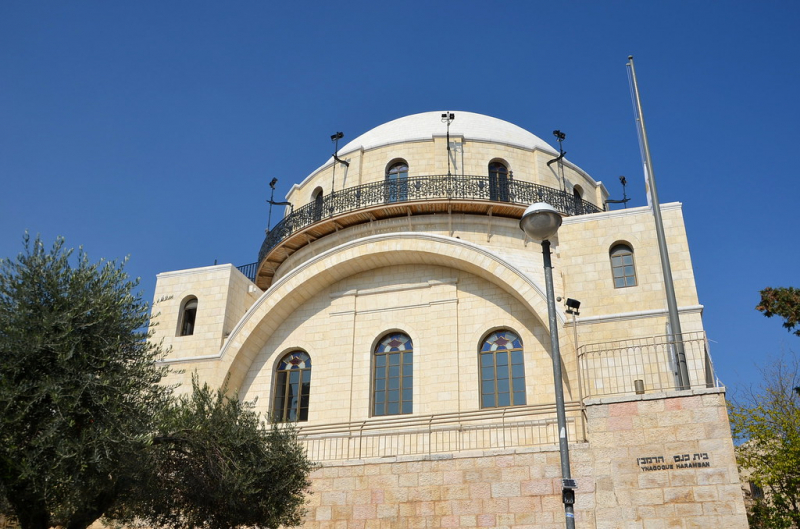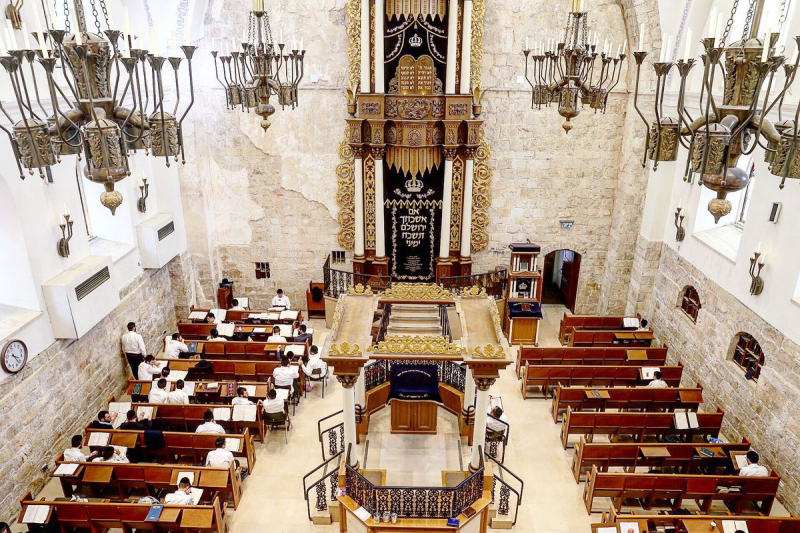Hurva Synagogue
Hurva Synagogue is one of the most impressive synagogues in the ancient Jewish Quarter in the Old City of Jerusalem and was built in the 16th century, but it was destroyed by the Ottomans. The synagogue became known as the Hurva, which means The Ruin because its reconstruction in the early 19th century was begun and then abandoned. In 1967, Louis Kahn received a commission to design Hurva Synagogue to replace the old destroyed Temple of Solomon.
This was a big opportunity for Kahn to express his ideas on architecture and to incorporate the elements of ruin in his building. The outer building of Hurva Synagogue consists of sixteen massive pylons, four on each side, recalling some ancient ruins. The plan was a perfect biaxial symmetry, however unpredictably, the entrances were on the narrow corners instead of on the axis.
In Hurva Synagogue, the first floor is designed to be a place for a bema, ark and candle service and the second floor is designed for seating. The most outstanding element in the final proposal is the series of four cylindrical openings on the axis piercing the ceiling planes shown in one of Kahn's pencil sketches. Also, a square opening at the centre of the ceiling brings light to the interior sanctuary, similar to the Pantheon.
Location: Jerusalem, Israel.
Website: https://travelrova.co.il/language/en/the-hurva-synagogue/
Tel: 972 2-626-5906
Hour: 8:00 AM - 17:00 PM
Google Rating: 4.6/5












